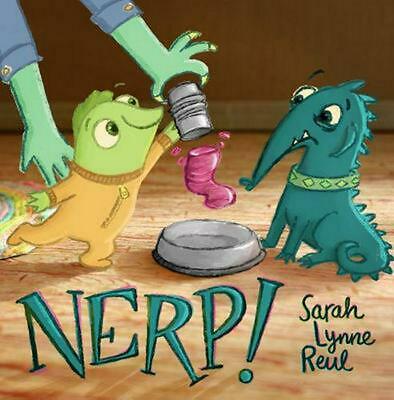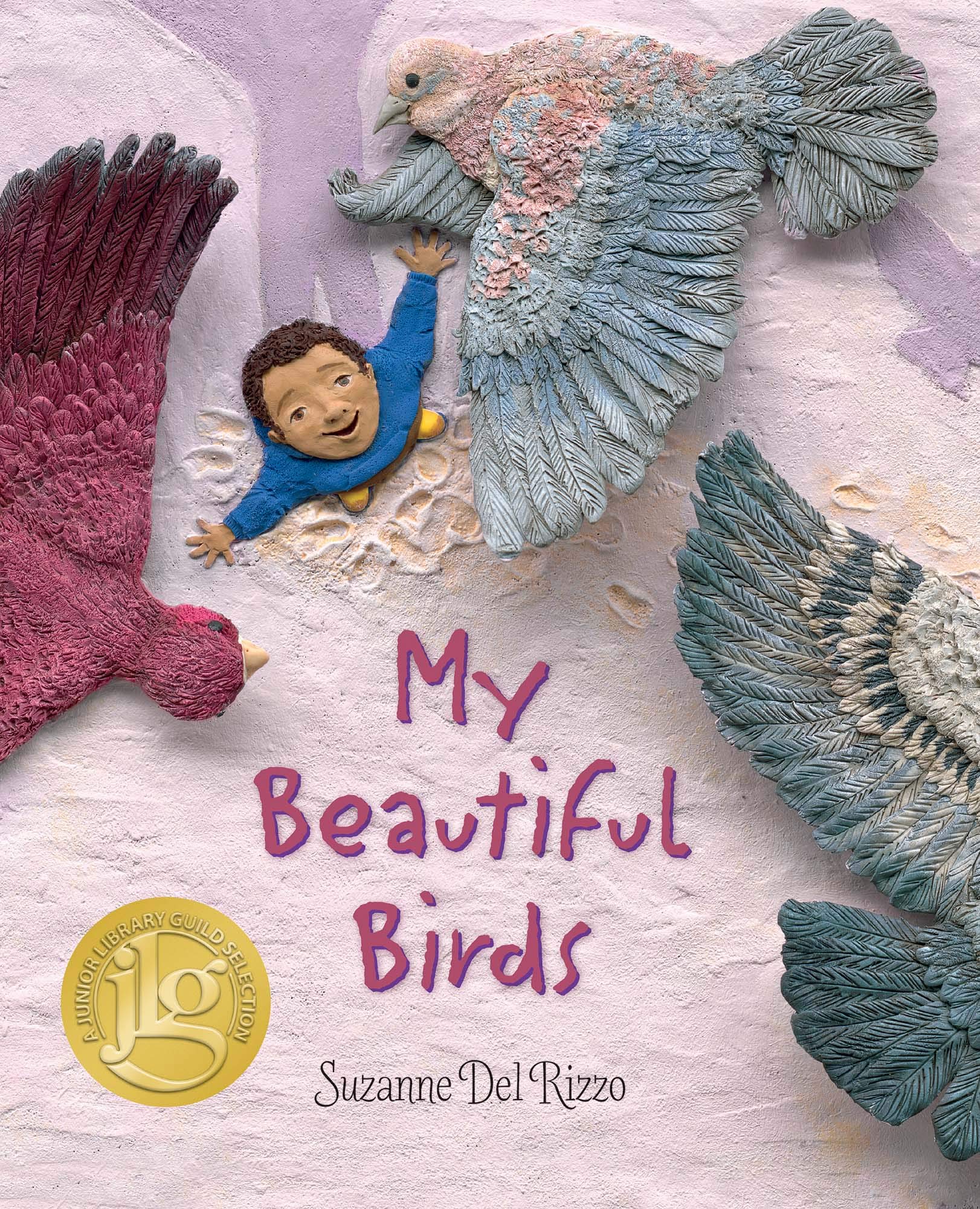Snowy Kids’ Books and a Winter Reading Challenge
By Jennifer Bergen, Program and Children’s Services Manager
 The library is trying something new with the new year – a winter reading challenge. We invite everyone of all ages to register for the Winter Reading Challenge and see if you can read at least 4 hours in January. You can also complete winter reading activities like reading aloud to someone, or telling a friend about a good book. This is just for fun, with a prize of a free book when you complete the challenge.
The library is trying something new with the new year – a winter reading challenge. We invite everyone of all ages to register for the Winter Reading Challenge and see if you can read at least 4 hours in January. You can also complete winter reading activities like reading aloud to someone, or telling a friend about a good book. This is just for fun, with a prize of a free book when you complete the challenge.
Reading aloud to your kids counts as reading time for both you and them. If you are looking for some good winter themed stories to read by the fireplace, here are some new and old titles to try.
“Snow Song” by A. K. Riley and Dawn Lo is a beautifully illustrated poem that delights in snow. Bundled up children are shown walking through the snow, gathering to sled and ice skate and make snow angels. If snow days seem magical to your children, this is the right book. “Snow Song” is also available as an ebook on Hoopla using your library card number.
“Cozy” is Jan Brett’s newest picture book, and it does not disappoint. “Cozy” is a magnificent musk ox who allows smaller animals, one at a time, to take shelter under the warmth of his long, thick fur. He sets “house rules” so the animals will get along – lemmings, a snowshoe hare, arctic fox and more. With a backdrop of snow and northern lights, “Cozy” is the perfect hero of this story reminiscent of “The Mitten”. Brett’s traditional side panels on illustrations give kids a chance to guess which animal will be next to join. Brett studied live musk oxen at a farm in Palmer, Alaska to make “Cozy” come to life. You can even watch Jan Brett read Cozy right now on YouTube, and read her older, beloved tale “The Mitten” as an eBook through Sunflower eLibrary or the Libby app.
“A Polar Bear in the Snow” by Mac Barnett is a quiet story about a polar bear who wakes up. Where is he going? The illustrations by Shawn Harris are captivating in their expansive white spreads of snow and blue sea. This short tale will easily lead to other winter bear books, such as “Bear Snores On” by Karma Wilson and “Bear Has a Story to Tell” by Phillip C. Stead, which can be viewed as read-aloud stories on BookFlix through the library’s website.
“Blizzard” by John Rocco is a favorite read-aloud choice, even for older kids. It recounts the author/illustrator’s own experience during a blizzard. At first the snow is exciting, but then it gets so deep, and snowplows cannot handle the load. The young boy is able to leave his house through a window, and uses makeshift snowshoes so he can walk on top of the snow and not sink. Pulling a sled, he begins a journey to the store, stopping by neighbors’ houses on the way to see what they need most. It’s an uplifting wintry tale that will make every kid wish they could be that hero in the snow.
Don’t forget about wonderful classics like Ezra Jack Keats’ “The Snowy Day” or Jane Yolen’s “Owl Moon”. Both of these stories show the quiet mysteriousness of snow, and the invitation the white-covered world gives to be explored, by yourself or with others. Both of these titles are made into short videos using the book illustrations on our free digital service, Kanopy.
More children’s books about winter and snow will be in our display section of the Children’s Room, which is open for browsing by appointment. Librarians can also pull books on topics or genres of your choice with our Quick Picks for Kids service by calling 785-776-4741 ext. 400. We hope kids and adults will enjoy participating in the Winter Reading Challenge this month.


 When I was a teenager, there weren’t many books that portrayed modern, realistic, diverse main characters. In school, I was reading classics and learning about topics like slavery, the Holocaust, and the Trail of Tears. The historical tragedies of brown (Latinx, Black, Indigenous American, etc.) people were being taught, but not their modern struggles, and certainly not their joys. For fun, I was reading popular books like
When I was a teenager, there weren’t many books that portrayed modern, realistic, diverse main characters. In school, I was reading classics and learning about topics like slavery, the Holocaust, and the Trail of Tears. The historical tragedies of brown (Latinx, Black, Indigenous American, etc.) people were being taught, but not their modern struggles, and certainly not their joys. For fun, I was reading popular books like  After multiple delays, one of the most anticipated video games of the year, “
After multiple delays, one of the most anticipated video games of the year, “ As a new parent, I’m learning the things children do that are frustrating but also hilarious. Hearing the stories my mother had of what my brother and I did seemed ridiculous until I start noticing it with my son and the children that come into the library. When my mom would be prepping a meal, I would sneak the best way a 3-year-old could and steal raw vegetables off the cutting board. Anything and everything that was on the ground was edible. This included a dead spider my dad tracked in from outside that my mother had to pull out of my mouth. My mom’s hair? That’s a toy that is asking to be pulled and be tangled around my fingers. If my parents gave me a piece of paper and some colored pencils, I decided that the wall would be a better canvas. Whatever it was, they love talking about how ridiculous my brother and I were and how now, it’s hilarious.
As a new parent, I’m learning the things children do that are frustrating but also hilarious. Hearing the stories my mother had of what my brother and I did seemed ridiculous until I start noticing it with my son and the children that come into the library. When my mom would be prepping a meal, I would sneak the best way a 3-year-old could and steal raw vegetables off the cutting board. Anything and everything that was on the ground was edible. This included a dead spider my dad tracked in from outside that my mother had to pull out of my mouth. My mom’s hair? That’s a toy that is asking to be pulled and be tangled around my fingers. If my parents gave me a piece of paper and some colored pencils, I decided that the wall would be a better canvas. Whatever it was, they love talking about how ridiculous my brother and I were and how now, it’s hilarious. With the recent adaptation of J.D. Vance’s bestselling memoir “
With the recent adaptation of J.D. Vance’s bestselling memoir “ Crafting won’t solve all your problems, but stabbing something with a needle repeatedly is an easy way to feel less anxious. Unfortunately I can’t follow a pattern to save my life, so for a while I only did embroidery.
Crafting won’t solve all your problems, but stabbing something with a needle repeatedly is an easy way to feel less anxious. Unfortunately I can’t follow a pattern to save my life, so for a while I only did embroidery. I had a very vivid imagination as a child. My older sibling and I spent a lot of time playing
I had a very vivid imagination as a child. My older sibling and I spent a lot of time playing  According to the United States Census Bureau, in 2019, 6.9 million Americans identify as American Indian and Alaska Native (AIAN) persons, and this year there are 574 federally- recognized American Indian tribes. Thirty-nine of these tribes call the state of Oklahoma home. I was born in Oklahoma, and while I only lived there for a few years, I’ve gone back frequently to visit family and have an affinity for the red-iron-rich staining dirt. Driving down I-35 from Manhattan to Oklahoma City, I’m always struck by the distinct change in the Earth’s hue, as well as the white-and-green highway signs featuring town names like Chickasha, Tonkawa, and Pawnee. These towns are named after American Indian tribes, and they call out to my curiosity as I drive down I-35. I wonder what stories and histories the peoples of these tribes have. I wonder how different or similar they are to my story. I wonder if they are just as taken with the vibrant red-iron-rich stained earth as I am, and if they have their own story to explain such a phenomenon. Being a librarian and avid bibliophile, I cannot help but find books to sate my curiosity about AIAN peoples and their stories. Here are some of the recently-published contemporary fiction novels I’ve discovered written by American Indian authors.
According to the United States Census Bureau, in 2019, 6.9 million Americans identify as American Indian and Alaska Native (AIAN) persons, and this year there are 574 federally- recognized American Indian tribes. Thirty-nine of these tribes call the state of Oklahoma home. I was born in Oklahoma, and while I only lived there for a few years, I’ve gone back frequently to visit family and have an affinity for the red-iron-rich staining dirt. Driving down I-35 from Manhattan to Oklahoma City, I’m always struck by the distinct change in the Earth’s hue, as well as the white-and-green highway signs featuring town names like Chickasha, Tonkawa, and Pawnee. These towns are named after American Indian tribes, and they call out to my curiosity as I drive down I-35. I wonder what stories and histories the peoples of these tribes have. I wonder how different or similar they are to my story. I wonder if they are just as taken with the vibrant red-iron-rich stained earth as I am, and if they have their own story to explain such a phenomenon. Being a librarian and avid bibliophile, I cannot help but find books to sate my curiosity about AIAN peoples and their stories. Here are some of the recently-published contemporary fiction novels I’ve discovered written by American Indian authors. Tana French is a highly regarded Irish mystery writer. Books like “
Tana French is a highly regarded Irish mystery writer. Books like “ Victoria Jamieson, author of
Victoria Jamieson, author of